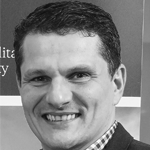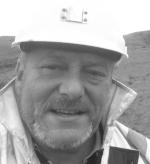Programme
Policy Updates and Practical Solutions for the Improved Risk Assessment, Remediation & Redevelopment of Contaminated & Brownfield Land in Wales
-
Registration and Refreshments
-
Opening Remarks from the Chair
-
Innovations in Brownfield & Contaminated Site Investigation
-
Improving the Value of the Site Investigation (SI) and Conceptual Site Model (CSM) through New Techniques for Data Collection, Management and Presentation
This case-study-based presentation will demonstrate how focus on the delivery of client-orientated and high quality data has led to the adoption of a technology-based approach to data management & presentation
- Exploring technology-enabled data collection in the field – the use of tablets rather than note books
- Assessing mistakes and missed data opportunities - the importance of robust data management
- Long-term management of data and changing the pace of reporting
-
Exploring the Benefits of Digital Data Collection & Presentation in Optimising Site Investigation & Remediation
- Examining the benefits that site-based data collection is intended to bring
- Exploring some of the new available technologies and their application to different stages of the site investigation and remediation process:
- effective use of remote telemetry monitoring to improve field data collection
- Exploiting data analysis techniques such as GIS, 3D modelling and statistics to add value to your desk study and give a better visualisation and understanding of the site
- Proving the validity and accuracy of new techniques to the regulator – what will they accept and what evidence is required for LA and regulatory sign-off?
-
Q&A
-
Morning Refreshments & Networking
-
Delivering Brownfield Land Development Within Revised Welsh Planning Policy Frameworks
-
Update on Changes to Welsh Planning Policy and Implications for Brownfield & Contaminated Land Development
- Outlining how changes to Welsh Planning Policy Frameworks will facilitate brownfield development:
- Welsh Planning Policy Guidance v10 (published Dec 2018)
- draft National Planning Framework (July 2019)
- highlighting key differences between Welsh and English Planning Policy Guidance
- Outlining how the management of contaminated land feeds into the Well-Being of Future Generations (Wales) Act
- how are the goals of the Act considered in any funding or proposals for the investigation/remediation of potential sites?
- Exploring what is being done to bring vacant land forward and improve housing land availability in Wales:
- Stalled Sites Fund
- examining the possible introduction of a Vacant Land Tax?
- Update on work being done to create a Planning Inspectorate for Wales and a separate Welsh Planning Code
- Outlining how changes to Welsh Planning Policy Frameworks will facilitate brownfield development:
-
Extended Audience Discussion: Identifying the Barriers to the Redevelopment of Brownfield and Contaminated Land in Wales and Ways to Overcome These
- Exploring how the process from site investigation to remediation to redevelopment could be simplified and accelerated
- Discussing how local authorities, remediation consultants & contractors and other stakeholders can work together effectively to overcome the challenges associated with developing contaminated land
This session will take the form of an extended audience Q&A discussion. All conference participants are encouraged to ask questions and share their own thoughts and experiences relevant to the issues outlined.
-
Regional Remediation Project Case Study
This session will feature a practical case study of a remediation and brownfield development project in Wales.
-
Networking Lunch
-
Contamination Risk Assessment
-
Ground Gas and VOCs: Practicalities of Continuous Monitoring for Cost-Effectively Assessing the Risks from Ground Gases and Soil Vapours
- Clarifying the requirements of current regulations for ground gas and vapour risk assessment on development sites and recent progress made both in the UK and internationally
- Understanding where uncertainties and misconceptions occur in risk-assessing the most common contaminants and how these can be addressed:
- techniques for preventing overly conservative or incorrect assessments
- Clarifying the Regulator’s stance on new techniques for monitoring and risk-assessing ground gas
- Case Study: Evaluating the cost-benefits of complete continuous monitoring in maximising data collection and adding value to your ground gas and VOC risk assessments
-
Optimising Subsurface Information To Better Understand Ground Conditions & Improve Decision-Making
- Exploring the amount and type of subsurface information available and the extent to which it is not currently used
- Introducing the Dig-To-Share initiative aiming to “unlock” data, make it widely available, and reduce the costs and risks of brownfield development
- The Cardiff Geo-Energy Observatory - project background and future goals
- New modelling and software tools to facilitate site characterisation and achieve a better understanding of contaminated sites
-
Management of Disused Colliery Tips
- Outlining the role of the Coal Authority
- Tip management & historic legacy
- Tip inspections & monitoring
- Good environmental management
- Other tips
- Conclusions
-
Afternoon Refreshments & Networking
-
Best Practice Waste Management Strategies for Remediation & Construction Projects in Wales
-
Practicalities of Implementing Effective Classification and Risk-Assessment of Waste Materials in line with Current Guidance
- Detailing the practical use of waste classification guidance vs Waste Acceptance Criteria (WAC) testing – key differences and implications
-
Case Study: Delivering Sustainable Remediation Solutions & Re-using Materials on Brownfield Sites
- Outlining sustainability from a contractors viewpoint
- Discussing the key processes that should be followed to make a project as sustainable as possible
- Using Case Studies to highlight the benefits of sustainability to all Stakeholders
-
Q&A
-
Closing Remarks from the Chair and Close of Conference










